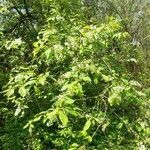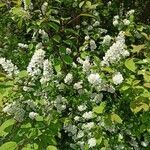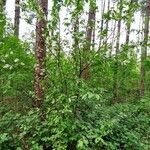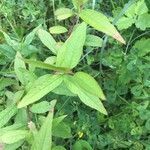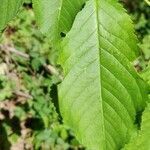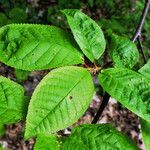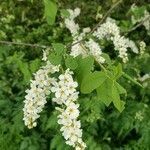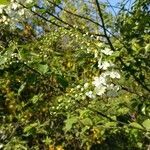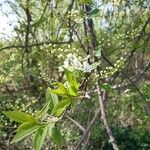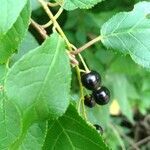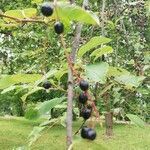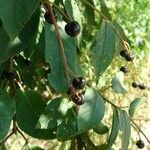Tall shrub or small tree to 15 m; bark foetid; lvs oblong-obovate, 5–10 cm, short-acuminate, finely and sharply toothed, racemes loose and often drooping, 8–15 cm; pedicels 10–15 mm; hypanthium pubescent within; sep ovate-oblong, 2 mm, deeply erose; pet white, elliptic, 6–10 mm; fr inedible, nearly black, 6–8 mm; stone sculptured; 2n=32. Native of Europe, now rarely cult. and occasionally established in woods, thickets, and roadsides.
